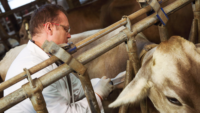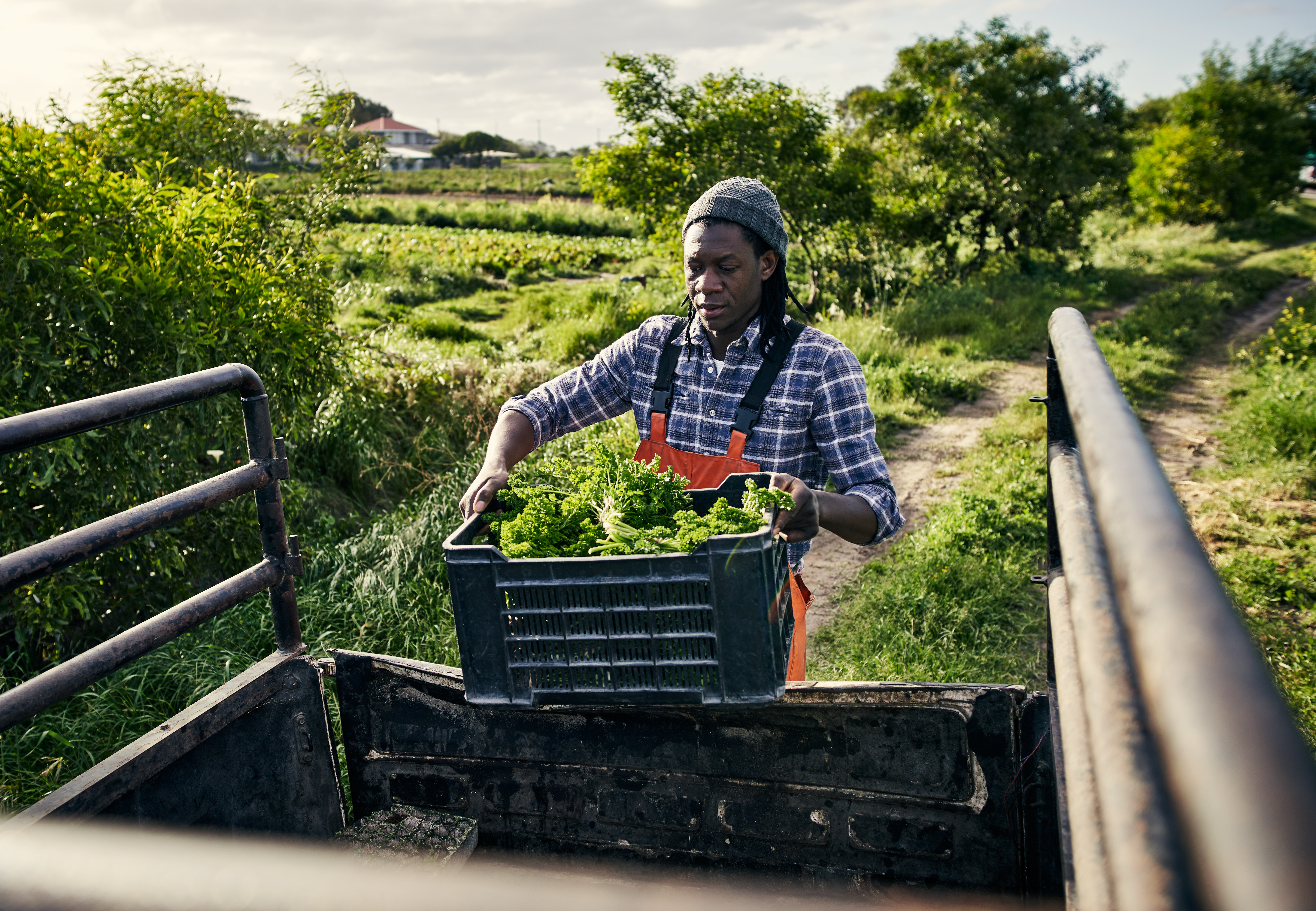Are our Diets at the Intersection of Food Safety and Sustainability?

Credit: geralt (geralt-9301) via Pixabay
The answer to the question posed in the title of this article is an immediate "yes"—our diets are at the intersection of food safety and sustainability. According to the 2019 Lancet Commission report, "Food systems have the potential to nurture human health and support environmental sustainability; however, they are currently threatening both."1 Our dietary choices are contributing to the pressure on global food systems. Modern diets are expected to consist of nutritious, environmentally sustainable, high-quality and safe foods, enabling people to satisfy their nutrient requirements and avoiding foodborne illnesses. In reality, current diets are increasingly unhealthy, unsustainable, and inequitable for many population groups. They are often not up to the required food safety standards, particularly in non-Western countries. The West appears to exhibit heightened awareness about food safety, with many countries claiming that they maintain high standards during the production, distribution, storage, and sale of food, and that they have mandatory legal requirements to protect people.2 However, there is less understanding of what makes human diets sustainable in a way that ensures global food security and sustainability.
High-Quality, Safe, and Sustainable DietsThe Global Panel on Agriculture and Food Systems for Nutrition defines high-quality diets as "…those that eliminate hunger, are safe, reduce all forms of malnutrition, promote health, and are produced sustainably—i.e., without undermining the environmental basis to generate high-quality diets for future generations3 This means that a high-quality diet should consist of safe foods providing the appropriate levels of nutrients and other essential micronutrients to support people's physiological and physical activities. The issue of malnutrition is complex as it covers undernutrition (e.g., hunger, starvation, stunting, and micronutrient deficiencies or insufficiencies) and also overeating (i.e., overweight and obesity), or consuming the wrong types of foods (e.g., overprocessed or with a high sugar content).4 Depending on the quantity of the food consumed, eating safe foods can result in both types of malnutrition. The sustainability of human diets is even more complex, as it takes into consideration the ability to produce food with the required characteristics associated with individual health, as well as the non-nutritional impacts of people's food choices, such as environmental, social, cultural, and economic. In 2020, the same Global Panel concluded that present food systems are no longer fit for purpose and are leading toward a deterioration in both human and environmental health.4 Moreover, poor human diets pose higher risks to mortality and morbidity than the combined effects of unsafe sex, alcohol, drug and tobacco use, while many environmental systems are pushed beyond the safe operating space of the planet.1 Contrary to the definition of high-quality diets, our food choices cause unacceptable negative environmental deterioration, including contributing to climate change, biodiversity loss, and reduction in soil fertility. They also function as a notable risk factor for the global burden of disease and death.5,6Irrespective of whether food is safe to consume, suboptimal diets with high intakes of sugar, processed meat, red meat, and sodium result in significant morbidity and mortality, estimated at 11 million deaths and 255 million disability-adjusted life years (DALYs) in 2017.4 While there are limits in the intake of these elements in national dietary guidelines, the link between the state of nature and human health is rarely recognized. Red meat, and beef in particular, not only contributes to deteriorating individual health but is also the most unsustainable way of feeding people and the most inefficient way of converting protein inputs for human consumption.7
Food Safety
Food is fundamental to human existence, and its safety is "everyone's issue."8 Obliged by safety standards, food must be produced in ways that are safe and suitable for consumption, minimizing the risk of individuals becoming sick from foodborne illnesses. Food safety acts as a prerequisite to ensuring food security globally9 and encourages the consumption of food free from contamination, pathogens, and microbiological agents such as bacteria, viruses, fungi, or parasites.
Despite all of these conditions being essential to human health, food safety remains a very anthropocentric concept. Its main preoccupation is with avoiding harm to humans. It does not, however, consider harming other living species. The application of pesticides, fungicides, herbicides, chemical fertilizers, industrial methods of farming, factory farming of livestock, use of antimicrobials, and other technological solutions have facilitated the expansion of food production under the watchful eye of governmental organizations charged with protecting human health. Back in 1962, Rachel Carson raised the alarm about the environmental impact of such compounds in her book Silent Spring.10 These trends have since expanded, transgressing Earth's planetary boundaries and taking food production into high-risk zones.11 A worrying outcome from this is, for example, the sharp decline and extinction of insects threatening the processes of plant pollination.12 What is safe for humans is often not safe for other species, potentially leading to catastrophic consequences.
Recently, there has been an increasing awareness and a growing emphasis among consumers on the environmental performance of the food they eat. Consumers anticipate increased transparency around its carbon footprint and the sustainability and responsible sourcing of the ingredients used. Their attitudes are shifting to an increased focus on improving health amid the COVID-19 pandemic, but also because of climate change, extreme weather events, and other ecological concerns related to food's environmental impact.8 Consumers demand simplified and cleaner food labeling.13 As more scientific evidence emerges about the intersection of food safety and sustainability, the food sector is being challenged by consumer sensitivity in an attempt to maintain public trust. The community is also voicing its social sustainability concerns related to the affordability of food and its cultural appropriateness.14
The Road Ahead
At an intersection, several possible routes lie ahead. If food security is the destination we want to reach, then food safety and food sustainability should not be seen as two alternative routes. "Food safety and food security are, by necessity, complementing aims for achieving freedom from hunger,"15 as well as all other forms of malnutrition.
In mathematics and logics, necessity and sufficiency are two conditions describing the way to reach a conclusion. In achieving long-term food security, food safety is a necessary condition; in other words, food security can occur only with food that is safe. The sufficient condition, however, is for food systems to be sustainable. If we revisit the question posed in the title of this article, the answer now is clear: only sustainable diets can guarantee long-term food security.
- Willett, W., J. Rockström, B. Loken, et al. "Food in the Anthropocene: The EAT–Lancet Commission on Healthy Diets from Sustainable Food Systems." The Lancet 393, no. 10170 (2019): 447–492. https://doi.org/10.1016/S0140-6736(18)31788-4.
- Food Safety Standards Australia and New Zealand. "Food Standards Code." 2021. https://www.foodstandards.gov.au/code/Pages/default.aspx.
- Global Panel on Agriculture and Food Systems for Nutrition. "Food Systems and Diets: Facing the Challenges of the 21st Century." 2016. https://www.glopan.org/foresight1/.
- Afshin, A., P. J. Sur, K. A. Fay, et al. "Health Effects of Dietary Risks in 195 Countries, 1990–2017: A Systematic Analysis for the Global Burden of Disease Study 2017." The Lancet 393, no. 10184 (2019), 1958–1972.
- Global Panel on Agriculture and Food Systems for Nutrition "Future Food Systems: For People, our Planet, and Prosperity." 2020. https://foresight.glopan.org.
- Fanzo, J. and C. Davis. "Can Diets be Healthy, Sustainable, and Equitable? Current Obesity Reports 8 (2019): 495–503. https://doi.org/10.1007/s13679-019-00362-0.
- Swinburn, B. A., V. I. Kraak, S. Allender, et al. "The Global Syndemic of Obesity, Undernutrition, and Climate Change: The Lancet Commission Report." The Lancet 393 (2019): 791–846. https://doi.org/10.1016/S0140-6736(18)32822-8.
- Poore, J. and T. Nemecek. "Reducing Food's Environmental Impacts through Producers and Consumers." Science 360 (2018): 987–992.
- Food and Agriculture Organization of the United Nations. "Thinking About the Future of Food Safety: A Foresight Report." 2022. https://doi.org/10.4060/cb8667en
- Pires, S. M., S. T. Thomsen, M. Nauta, et al. "Food Safety Implications of Transitions toward Sustainable Healthy Diets. Food and Nutrition Bulletin 41 (2020): 104S–124S. https://doi.org/10.1177/0379572120953047
- Carson, Rachel. Silent Spring. Boston, Massachusetts: Houghton Mifflin, 1962.
- Marinova, D., and D. Bogueva. Food in a Planetary Emergency. Berlin, Germany: Springer, 2022.
- Goulson, D. Silent Earth: Averting the Insect Apocalypse. Vintage, 2022.
- Macready, A. L., S. Hieke, S., M. Klimczuk-Kochańska, et al. "Consumer Trust in the Food Value Chain and its Impact on Consumer Confidence: A Model for Assessing Consumer Trust and Evidence from a 5-Country Study in Europe." Food Policy 92, no. 101880 (2020). https://doi.org/10.1016/j.foodpol.2020.101880.
- Food and Agriculture Organization of the United Nations and World Health Organization. "Sustainable Healthy Diets: Guiding Principles." 2019. https://www.fao.org/3/ca6640en/ca6640en.pdf.
- Vågsholm, I., N. S. Arzoomand, and S. Boqvist. "Food Security, Safety, and Sustainability—Getting the Trade-Offs Right." Frontiers in Sustainable Food Systems 4, no. 16 (2020). https://www.frontiersin.org/articles/10.3389/fsufs.2020.00016/full.
Looking for a reprint of this article?
From high-res PDFs to custom plaques, order your copy today!







